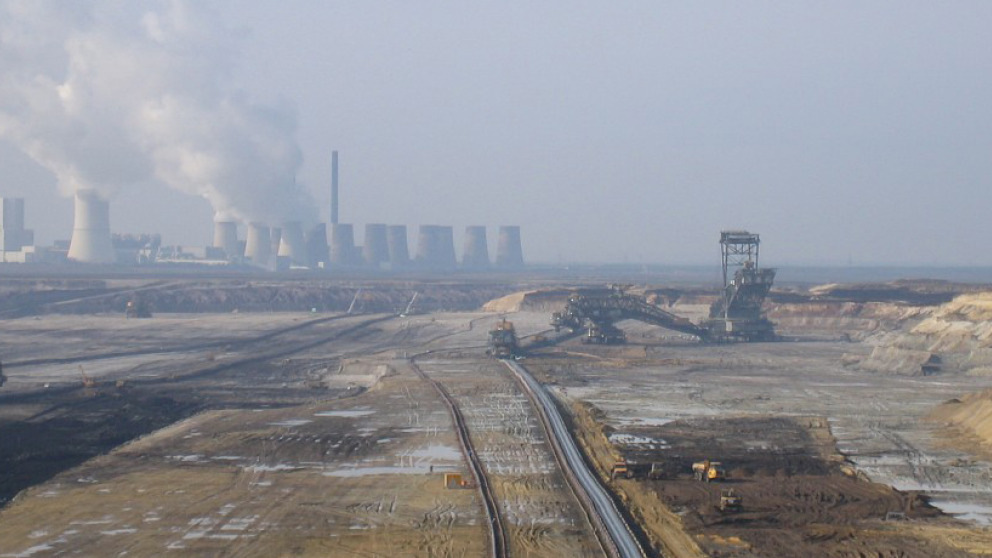Headline:
A Black Future for Coal

King Coal – as the most widespread and cheapest fossil energy source is often called – is entering a crucial, maybe definitive, phase. Indeed, worldwide coal consumption has decreased significantly in recent years due to a growing hostility to the generation of electricity using unsustainable coal. This global opposition comes from several different sources: political, ethical and economic campaigns are working towards a transition to a future energy scenario that will not include energy derived from coal.
On 24 September – in preparation for the Paris Conference on Climate Change – Chinese President Xi Jinping announced in Washington that China will start a national programme in 2017 that will limit and put a price on greenhouse gas emissions. The announcement was made during a summit meeting with President Obama and is part of an ambitious effort by China and the United States to use their international influence to fight climate change and put pressure on other nations to do the same. China’s economy still depends heavily on cheap coal-fired electricity. However, coal consumption has been declining sharply since 2014, and in the first six months of 2015 China imported just under 100 million tonnes of coal in total (including lignite and anthracite), a reduction of more than 38% compared to the same period of the previous year.
Pope Francis sees urgent need to replace coal
The epicentre of the coal crisis is located in the United States. The rapid development of the shale gas industry, which has allowed the United States to improve its energy self-sufficiency and become a coal exporter, has been a major contributing factor. The price of coal is currently around US$ 40 per tonne, 70% lower than in 2008. In just four years, the world’s major coal concerns have lost US$ 125 billion.
One of the latest and most publicised criticisms of coal has come from a source as eminent as it is unexpected: Pope Francis. In his encyclical Laudato sí, the Pope states that “[w]e know that technology based on the use of highly polluting fossil fuels – especially coal, but also oil and, to a lesser degree, gas – needs to be progressively replaced without delay.” There you have it, especially coal! Francis – who takes his name from Francis of Assisi, a saint renowned for his reverence for nature – advocates his environmental positions all over the world. On his travels, most recently to South America, Cuba and the United States, the Pope always puts the need to respect ‘mother’ earth and ‘sister’ nature at the centre of his speeches and personal conversations with international leaders.
Norway turns its back on coal
In Germany, the power company Vattenfall has put the envisaged expansion of the lignite mine Nochten in Saxony and the resettlement of residents that it would have entailed on hold. The plan was to extend the Nochten opencast mine to the Nochten II mining area, making the relocation of around 1,700 inhabitants of the surrounding communities necessary. The main grounds for the interruption of these activities are the “uncertain energy policy framework for lignite mining and electricity generation from lignite in Germany,” as Vattenfall explained last June. For the environmental organisation Greenpeace, this decision is long overdue, and the days of brown coal in Germany are numbered.
But maybe the hardest blow comes from Norway. In May, the Norwegian Parliament formally endorsed a move to sell off all coal-related investments in Norway’s US$900-billion Government Pension Fund (Statens pensjonsfond Utland, SPU), considered to be the world’s largest sovereign wealth fund. A preliminary evaluation suggests that Norway will thus divest itself of investments to the tune of over US$ 8 billion. The largest single sell-off from the Norwegian fund will be that of the UK utility SSE, in which the fund holds US$ 956 million worth of shares. The fund is also set to sell its US$ 49-million stake in Drax, which runs the UK’s biggest coal-fired power station. Other major energy companies identified are Germany’s E.ON (US$ 685 million) and RWE (US$ 320 million) as well as the Danish company Dong (US$ 30 million), which is often associated with wind energy but also has a significant coal business.
Could carbon capture technologies help keep coal in the game?
In the light of the above developments, coal-related industries are looking to new markets, such as Thailand, Indonesia, Vietnam, South Africa, Dubai and above all India, where coal consumption grew by 11% last year. Nevertheless, the main forecasts and outlooks predict that the growth of these new markets will not be sufficient to offset the global market shrinkage of coal. Moreover, the rate of installation of new generation, high-efficiency coal power plants – which produce very low NOx and SOx and 20% less CO2 emissions – seems destined to decline, at least in OECD countries. This is due to these plants’ CO2 emissions per produced kWh, which are still considered too high.
The only way that coal might retain a role in the future energy mix is if it could be made compatible with the kind of closed-carbon cycle scenarios that would meet the requirements of a future, 100% sustainable energy system. In this respect, carbon capture technologies, and especially the oxy-fuel technology, are already sufficiently mature to enable electricity generation from coal (‘green coal’) with almost no CO2 emissions. The future challenge will lie in finding ways of re-using the huge amounts of captured CO2 to produce materials and fuels in a sustainable future green economy.
Header photo: Martin Schmid/CC BY-ND 2.0
